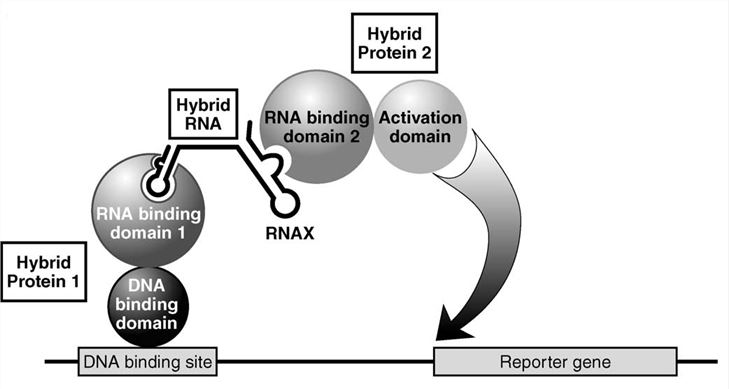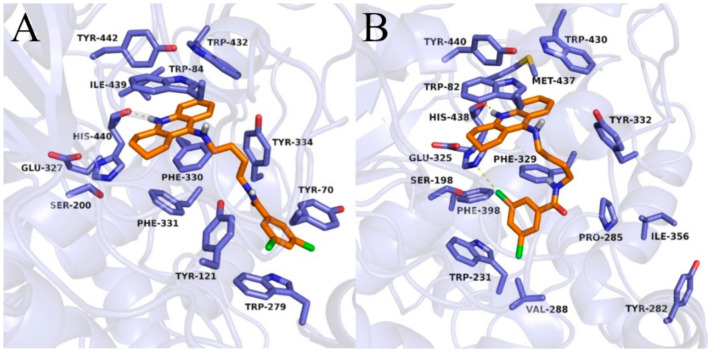Creative Biolabs is dedicated to providing yeast three-hybrid (Y3H) services including library construction and screening, which are introduced to assay RNA-protein interactions and devised to the selection of RNA binding protein with modifications to use a small RNA as bait. In 1996, the Wickens and Kuhl labs developed the yeast three-hybrid system independently. This system also makes it possible to identify those regions of an RNA or protein that are required for a known interaction and to test the combinations of RNA and protein to confirm whether they interact in vivo.
It is well-known that Y3H methods can be applied in a variety of research fields:
a. Finding protein partners of a known RNA sequence from cDNA libraries
b. Searching a natural RNA partner or ligand for a known RNA binding protein via RNA libraries
c. Testing suspected RNA-protein interactors
d. Mutational analysis of interacting RNA and protein
e. Discovery of multiprotein-RNA complexes
In addition, Y3H is still a sensitive method to screen for the interactions between small molecule drugs and their protein targets.
Yeast three-hybrid system is a derivative of yeast two-hybrid (Y2H). It’s a kind of powerful tool to dissert RNA-protein interactions of interest and that typically consists of three chimeric components.
The first hybrid protein is made up of an RNA binding protein (RBD) fused to a DNA binding domain (DBD). The second fusion protein molecule contains a second RNA binding protein fused to the transcriptional activation domain (AD). The third hybrid part is an RNA molecule which bridges above two fusion proteins by providing two specific RNA targets for the RNA binding proteins. When this tripartite constituent forms at a promoter, the reporter gene is turned on, even transiently. And the expressed reporter products can be recognized by simple biochemical or phenotypic assays.
 Fig.1 General strategy of the Y3H system.1, 3
Fig.1 General strategy of the Y3H system.1, 3
In an RNA Y3H method, there are lots of great advantages presented on Creative Biolabs’ platforms:
RNA-protein interactions are essential for the proper execution and regulation of each step in the life of eukaryotic mRNAs, such as splicing, translational control, mRNA processing, and infection of RNA viruses. With this, Creative Biolabs provides a potentially effective technique by which to examine RNA-protein interactions towards a variety of purposes. The final submitted deliverables include an exhaustive report, a full list of identified protein partners, and interaction domain on each protein, together with scientific assistance whenever clients or their projects need for the better outcome.
Other optional protein-nucleic acid interaction (PNI) assay services:
 Fig.2 The screening for new in vivo interactions between 3c and known receptors using Y3H.2, 3
Fig.2 The screening for new in vivo interactions between 3c and known receptors using Y3H.2, 3
Here, the researchers designed and synthesized a series of novel tetrahydroacridine and 3,5-dichlorobenzoic acid hybrids with different spacers and evaluated their ability to inhibit two kinds of cholinesterase. These four compounds—3a, 3b, 3f, and 3G—showed selective inhibition of butyrylcholinesterase. Among them, compound 3b had the highest activity, and 3c showed double cholinesterase inhibitory activity and had the highest acetylcholinesterase (AChE) activity. They also tested the ability of the active compound 3c to inhibit A β aggregation and studied the catalytic active site (CAS) and peripheral anion site (PAS) of 3c targeting AChE. In addition, 3c seems to have neuroprotective activity and can be regarded as a free radical scavenger. It also shows little inhibitory activity on hyaluronidase (HYAL), which may indicate that it has anti-inflammatory properties. Finally, the researchers screened the new in vivo interaction between 3c and known receptors using yeast three-hybrid (Y3H) screening.
The Yeast Three-Hybrid (Y3H) assay is an extension of the Yeast Two-Hybrid (Y2H) system, designed to study protein interactions with various molecules, typically RNA or small molecules. This method involves three components: a DNA-binding domain fused to a protein of interest, an activation domain fused to another protein or molecule, and a reporter gene that is activated only when all components come together in the yeast nucleus. This assay is particularly useful for identifying and characterizing the interaction between a protein and a third molecule, providing insights into complex biological processes and potential therapeutic targets.
Researchers use the Y3H assay to explore interactions that involve not just two proteins, but also an additional molecule such as RNA, small peptides, or other small molecules. This capability is invaluable for understanding molecular mechanisms that involve complex formations beyond simple protein-protein interactions. For example, it can be used to identify RNA sequences that bind to a specific protein, or to screen for small molecules that can disrupt or enhance interactions between known binding partners. The versatility of the Y3H system makes it a powerful tool in drug discovery, genetic research, and the study of disease mechanisms.
First, it allows the identification of interactions between proteins and other types of molecules, broadening the scope beyond protein-protein interactions. This is particularly useful for studying RNA-protein interactions or the influence of small molecules on protein complexes. Secondly, it provides a cost-effective and relatively straightforward method that can be performed in a basic laboratory setting without the need for expensive equipment. Additionally, the Y3H system is highly scalable, making it suitable for high-throughput screening applications.
The artificial nature of the yeast cellular environment can affect the relevance of the interactions observed to human cells or other biological systems. There may be differences in post-translational modifications and other cellular contexts that could influence the interaction dynamics. Also, the assay might not detect weak or transient interactions effectively due to the stability requirements of the three-component complex. Moreover, the potential for false positives or negatives necessitates careful control experiments and validation of results through additional methods.
While traditionally used for RNA-protein interactions, it has been adapted to explore interactions with small peptides, DNA segments, and even small organic or inorganic compounds. This adaptability makes the Y3H assay a valuable tool in fields such as pharmacology, where it can be used to screen for potential drug molecules that affect protein interactions, or in genetic research to explore how certain molecules influence gene expression or protein function.
Use the resources in our library to help you understand your options and make critical decisions for your study.
All listed services and products are For Research Use Only. Do Not use in any diagnostic or therapeutic applications.
| USA:
Europe: Germany: |
|
|
Call us at: USA: UK: Germany: |
|
|
Fax:
|
|
| Email: info@creative-biolabs.com |
